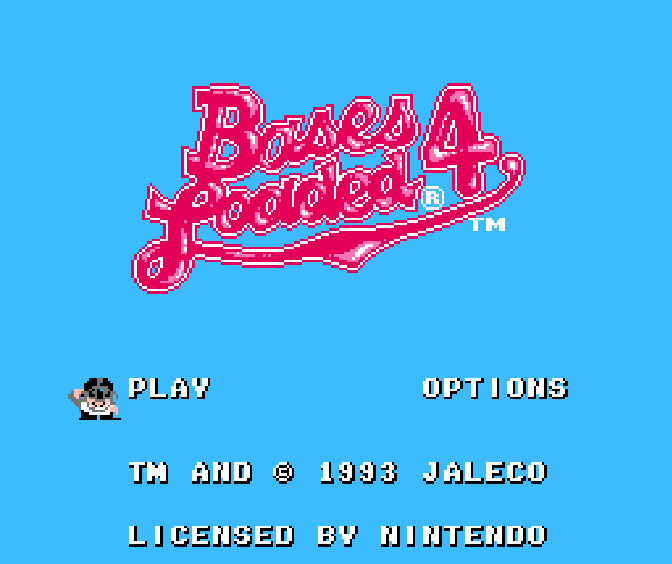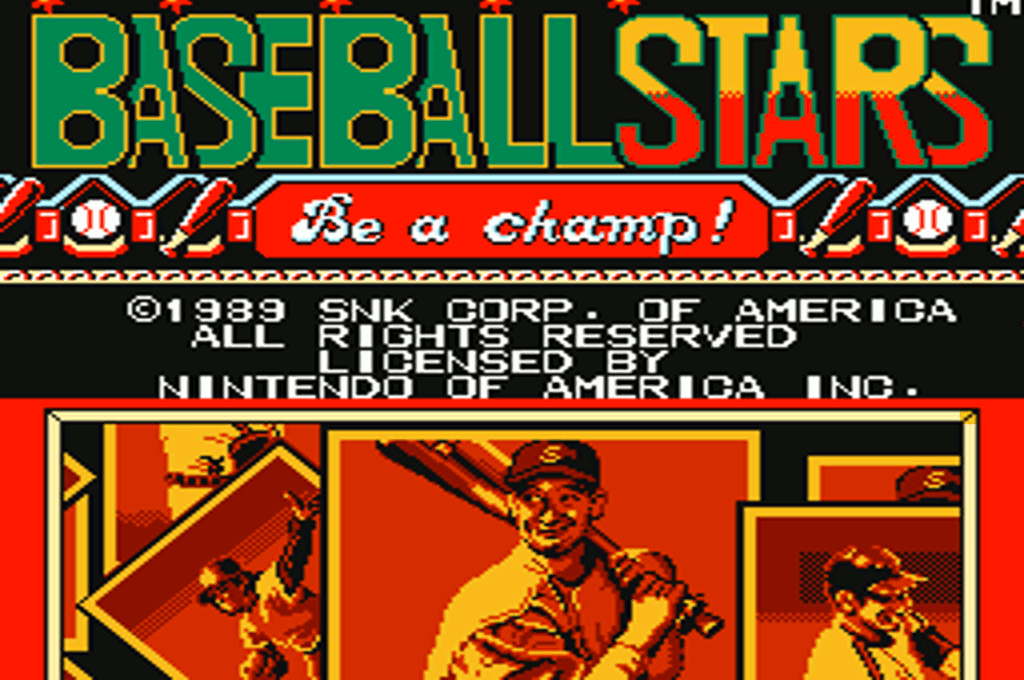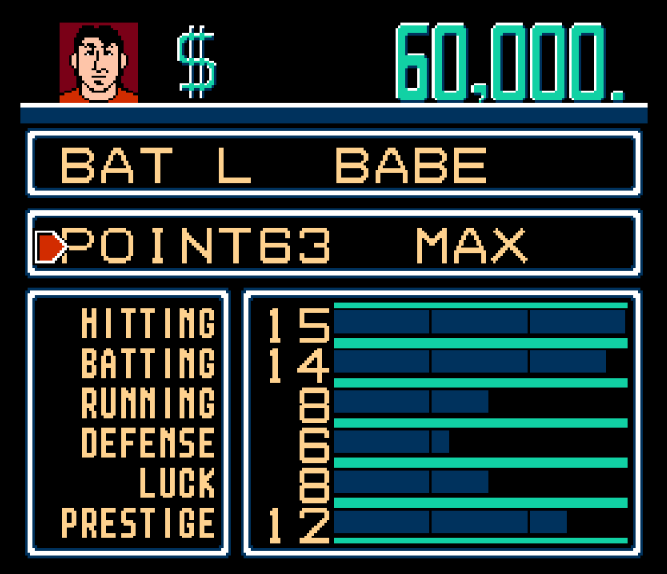[polldaddy poll=10471268]
Being the Elder Statesman of Pitcher List at a spry 37 years of age, my video game experience goes as far back to when you could count the number of bits in a game on two hands. Games were much different back then in the early 90s. Entire games could be conquered, start to finish, in an hour’s time of dedicated play (I’m looking at you Contra).
But, I’ve always been more of a sports game nut. I love the gameplay, I love the strategy, I love constructing lineups, and I love managing a team. I have always enjoyed pretending I am the manager at the press conference answering the difficult questions of why we won or lost and how we can do better. Perhaps I’m a player who is talking about his quest to be the first person to hit 100 home runs (video games are uber-realistic after all). My love of sports games was born on the Nintendo Entertainment System (“NES”) where imagination was sometimes necessary to carry you through a long season.
There simply was no one else on the Pitcher List staff capable of writing about the best baseball offerings on the NES. They weren’t born yet. Hence, the graphic designer was employed to represent this age of video games. In what I think was lovingly dubbed the Old-Timers Division, Bases Loaded 4 (1993) faces off against Baseball Stars (1989).
Bases Loaded 4 (1993)

It was the fourth installment of the series (obviously), and last version on the NES. It was released in North America in 1993 by Jaleco a year and a half following its Japan release in 1991.
Gameplay: It’s really important to put this game in the proper context of the video game landscape at the time. What Bases Loaded 4 provided was the most realistic version of a baseball game it could. Most other baseball offerings of the time were more clearly focused on being arcade games. It simply was about the gameplay. There was no roster management outside of picking your lineup for the day. There were simply two options: exhibition or regular-season mode. Exhibition could be played solo or against a friend or a family member (the rub back then was that the person had to be at your house, within a cord’s reach of the console). Regular season mode was a 130-game marathon with the goal to win 70 games for the right to go to the Super Series. The Super Series was a best of seven finale.
Player performance was either aided or hindered through a star system. A white star or a black star would indicate that the player just did something good or bad, respectively. For example, pitcher strikeouts and batter home runs resulted in white stars. However, strike out as a batter or give up a run as a pitcher and earn a black star. Additionally, pitchers would lose a star each inning that they were on the mound. The more white stars accumulated resulted in a positive performance.
The differentiator in this game was in the complexity of the pitching system. Pitching controls were robust for the time period and the precursor to the modern-day video game pitch systems. Game players had real options to throw pitches to nine different zones, control the pitch speed, and command the break of the pitch. Pitch results were varied and wild. Where else could a 108 mph heater be paired with a 55 mph Clayton Kershaw curve? Bases Loaded 4, that’s where.
Replayability: 11-year-old me thinks this game is ultra-playable. I ate it up. I remember playing it so much the first day I got it that when I went to sleep at night I started hallucinating. A midnight trip to use the bathroom had me believing that I was on the pitcher’s mound. When I went back to my bedroom, I was in the batter’s box. This game was also responsible for multiple scoldings from my parents as I was late to the dinner table. That’s right—I prioritized this game over food.
The biggest pain in this game was that in order to continue your progress if you wanted to take a break or do required human things like sleep, you needed to get a code. Without that code, you would lose all of your progress. Because I’m a lazy person, I often had to replay games I had already won (that’s more of a reflection on me than the game though).
While the overall gameplay is fun, this game is a true grind. There is not a lot of pomp and circumstance outside of the gameplay to keep a player interested. The main focus is getting to and winning the Super Series. At a minimum, that is a 74-game commitment. Thanks to the internet and emulators, we all can experience that joy with a fraction of the pain. Here are the cheat codes that take you to various milestones throughout the season. After 25 years of waiting, I might finally get to see my first championship. Still a shorter wait than for Indians fans.
Graphics: By today’s standards, the graphics are awful. Just really bad. But for the time? Pretty pretty good.

Uniforms and stadiums are relatively plain, which you’d expect. However, there was a level of detail that can be appreciated. During the at-bat, players can be seen with old-school stirrups and 3/4-length shirts. Also, there were several different stadium backgrounds.
Instead of the main camera being from behind home plate as it was for most every baseball game from the era, the view was from the perspective of the pitcher. This is similar to the view that we see on TV. The camera angle was positioned over the throwing hand of the pitcher, right or left. This view gave pitchers more leverage as it was difficult to tell balls from strikes as a batter or to know where to exactly swing.
But perhaps the most jarring difference is the defensive perspective. The fielding view faces home plate, which is not a view that would reemerge until MLB the Show (in my recollection anyway). This makes fielding counter-intuitive, as base controls are reversed. Further complicating matters, fielders are not seen on defensive plays until the last second. This makes a player rely on the fielding overlay quite a bit. For casual players of this game, the fielding configuration would always prove to be problematic.
Sound: There’s an argument to be made that sounds from this era of video games are superior to their modern-day counterparts. Basic melodies and lightly used voices are par for the course. Like other games, there is an 8-bit melody that plays during the start screen. There is a different melody when you are batting versus when you are pitching. The only voices that can be heard are muffled cries of strike, ball, and out. When the crowd goes crazy, it sounds like static with whistles thrown in.
But I don’t have to go to a soundboard to turn down the volume of one of the announcers (or turn it off completely) that will tell me the same story I’ve heard 40 times already or remind me of how Matt Chapman is always intense.
Miscellaneous: Rounding up some random thoughts about Bases Loaded 4:
- On the downside, there was no MLB licensing for this game. On the bright side, you were able to have teams in baseball havens like Hawaii and Utah.
- Statistics offered were basic and never changed regardless of how many games you played. Pitchers had ERA and a stamina number. Hitters had average and home runs.
- The best two power hitters in the game are both on Hawaii. Woods bats .307 with 37 HR while Mogica has 42 taters and a .263 average. The best pitcher in this game is also on Hawaii. Malton possesses a 1.84 ERA.
- More reasons to complain about fielding was that all of the players were tethered together. This makes the game player have to decide on how far the ball will travel in order to deploy an infielder or an outfielder.
- Umpires are in a permanent crouch position which I find amusing for some reason.
- You can throw the ball to yourself or you can throw the ball around the horn for hours on end without repercussion.
- The Japanese influence of the developers is apparent in this game as the look of the stadiums, the wind-ups of the pitchers, and stances/swings of the batters all have a NPB league feel.
- Home runs had the tendency to go right down the line. It was either going to hit off the foul pole or go foul. It seemed like every home run you were channeling your inner Carlton Fisk to wave the ball into fair territory.
Baseball Stars (1989)

The truly beloved Baseball Stars was released in 1989 by SNK, but was years ahead of its time. Back in May, Grant Brisbee of the Athletic wrote a love letter to Baseball Stars that captured the feeling of the game. You too can experience this classic through the magic of the emulator.
Gameplay: There are really two different components to Baseball Stars: On the field and off the field play. Where this game truly shines is off the field (more on that in Replayability). As far as the product on the field, the game is intuitive. In my first half-inning hitting after not playing in over two decades, I promptly loaded the bases and hit a grand slam. So, it is not the most challenging hitting environment.
Pitching does give you the option to throw fast or slow. But, most of the pitches stay on the same plane (outside of the sinker, which is relatively useless against a computer opponent). The break of the pitches is controlled by the user after the pitch is released. Ultimately, bat avoidance is the main objective. If the batter swings with the right timing while the pitch is over the plate, the ball will be hit.
Fielding is also straightforward. After a ball is hit, the player is automatically toggled based upon the camera view. Player attributes assist in the ability of the fielder to make the play. The only real controls to be cognizant of are catching the ball and throwing to the proper base.
Truly though, the nine-inning game while fun is just a time filler between the roster management which was the real draw of Baseball Stars.
Replayability: This game was full of the pomp and circumstance that the Bases Loaded franchise lacked. In fact, it was the first sports video game on NES to have a battery backup. It was necessary because the game allowed you to create a team, play a full season (up to 125 games), and improve your team along the way. Your team was able to be customized to your liking including a unique name and logo; the ability to fire, hire, and trade players; and choose how you were going to improve your players’ attributes along the way. You could even give names to your players. That means you could make a team composed entirely of the Springfield Nuclear Power Plant Softball Team. Not that anyone writing this article ever did that.
Each player on your team had a profile outlining their salary, maximum ability, and individual attributes. Here were the characteristics of Babe who was a centerpiece player of the American Dreams, the best team in the game:

Some pretty interesting attributes there. Perhaps the most interesting thing was Prestige. A team full of players with prestige allowed the game player to earn more money at the gate. This money could then be used to train other players on their team. The manner in which the training was allocated was completely up to the game player until a maximum of 90 points was attained. Alternatively, a player with a low ceiling could be fired in lieu of a rookie with a higher ceiling. Players’ salaries were always commensurate with their abilities (remember baseball analytics had yet to suppress player market values, or was that the owners? I forget). Salaries ended up ranging between $1,000 for a bad player to over $2 million for a bonafide star. That made it compelling to develop your own talent.
Another benefit of the backup: Playing the season also meant that statistics could be accumulated. Leaderboards showed the top players in batting average, home runs, RBIs, ERA, Wins, and Saves. I can only assume that WAR just missed the cut. It is incredibly satisfying to play a full season and see all nine players in your starting lineup at the top of the home run leaderboard AND all have toppled Roger Maris’ impossible 61 home run record. What a team.
Primarily because of the customization in Baseball Stars, the replayability factor is high. It could be simply to win a championship or to achieve the perfect team. That is, a team that is made up of all 90-point players. You’ll want to come back to play this game. It will be worth the five minutes of blowing into the cartridge to make the thing work.
Graphics: I think we are all keenly aware of the environment these 8-bit games were handicapped in. Given the restrictions, Baseball Stars does an admirable job of presenting a full baseball experience. Menus are well laid out and easy to navigate. The colors used were bright and deep both in the menus and within the actual gameplay.
Sound: Similar to Bases Loaded, this game has a few different melodies depending on the menu screen that is displayed or throughout game in play. What the developers did really well with the “soundtrack” was to capture the spirit of those old movie reels where you’d see Joe DiMaggio and Ted Williams shaking hands before cutting to grainy footage of a home run. The melodies are distinctly baseball-oriented in Baseball Stars. The only thing missing was a soundbite of Mel Allen saying, “How about that?”
Muffled voices indicating ball, strike, and out were left out in this game instead replaced with a whistle and a text box indicating the call. The roar of the crowd following a home run is reminiscent of waves crashing to the sand at the beach while celebratory music trumpets in the background.
Miscellaneous: Other general musings about Baseball Stars:
- This game was also not formally licensed. But the American Dreams team had Babe, Cy, Sandie, Hank, Willie, and others. Nod, Nod, Wink, Wink.
- There is a mode where you could watch the computer play. I assume that this was only for people with deep-seated gambling issues.
- Female players could be incorporated into any team or you could play with an already established team of all females dubbed the Lovely Ladies. The Lovely Ladies skill level was on par with other teams’ abilities. There was an added benefit of increased gate earnings, to boot. However even in the video game, the female baseball players still needed to wear shorts.
- Each player profile had a custom player image. Some of the players just look like they know they’re terrible, while others just look completely full of themselves. I’ll let you guess which players have gone Full Bregman.

Featured Image by Justin Paradis (@freshmeatcomm on Twitter)

